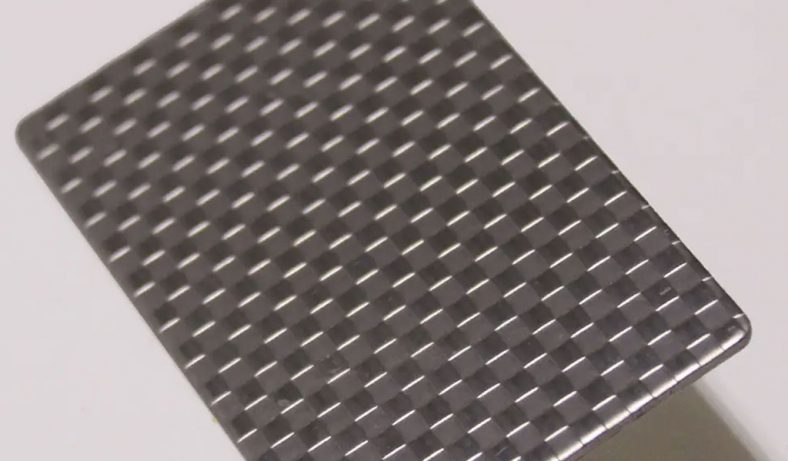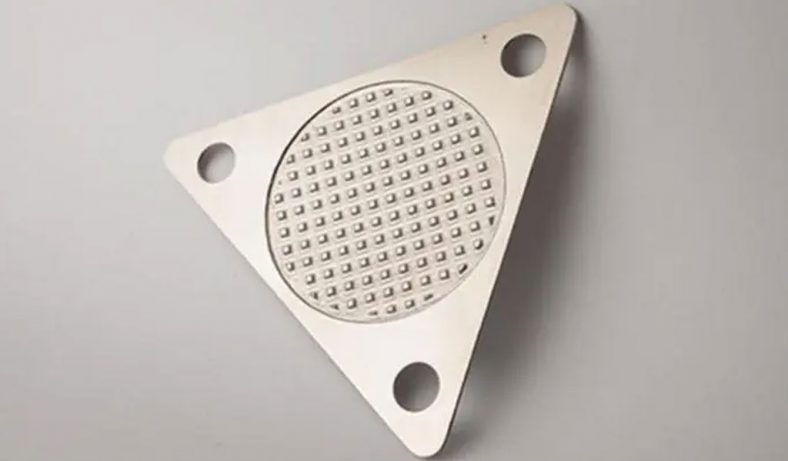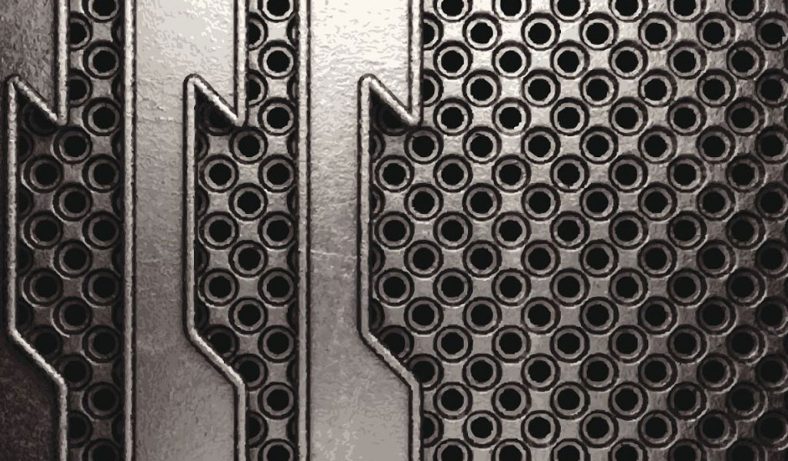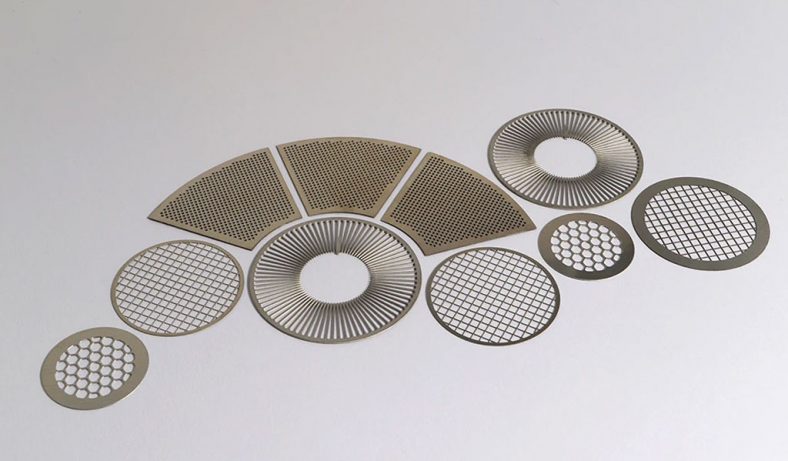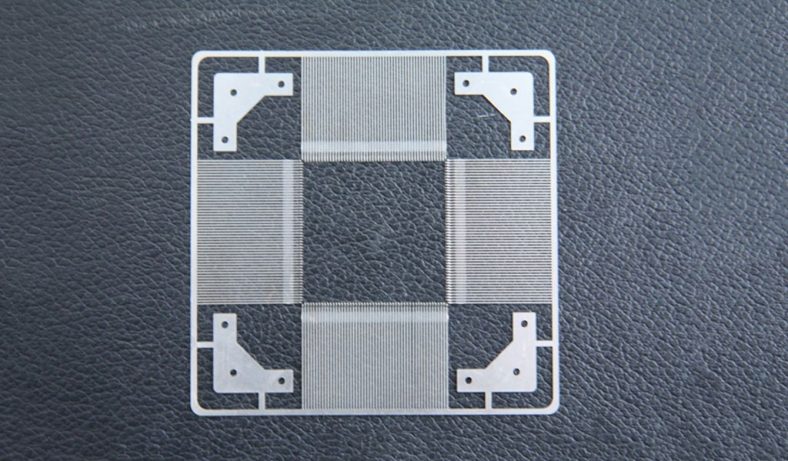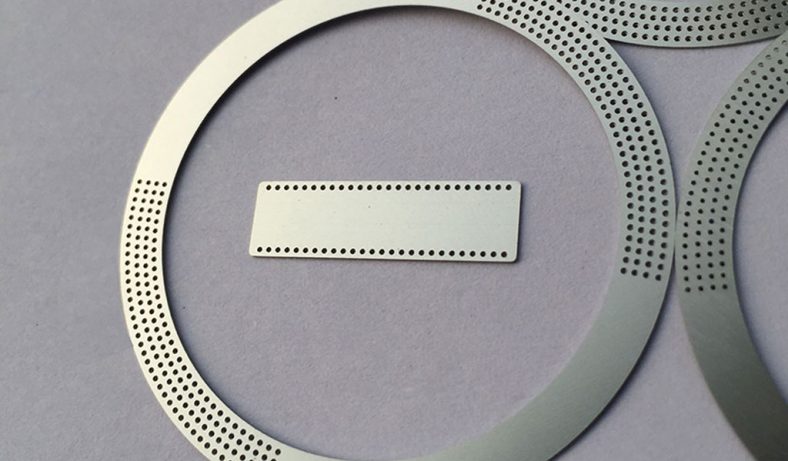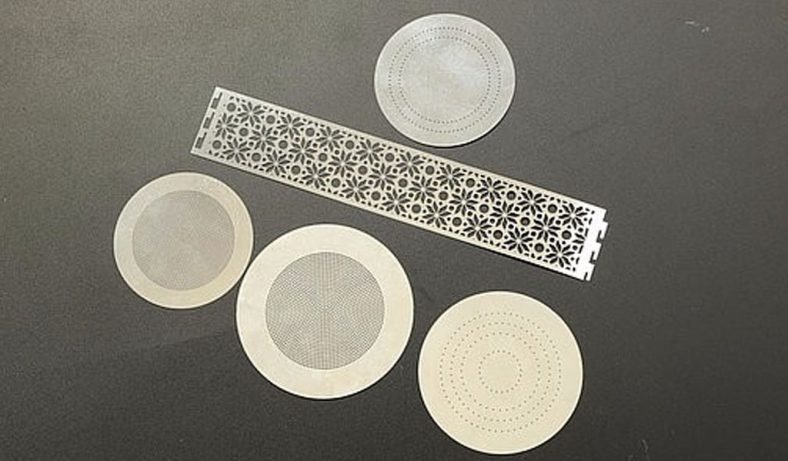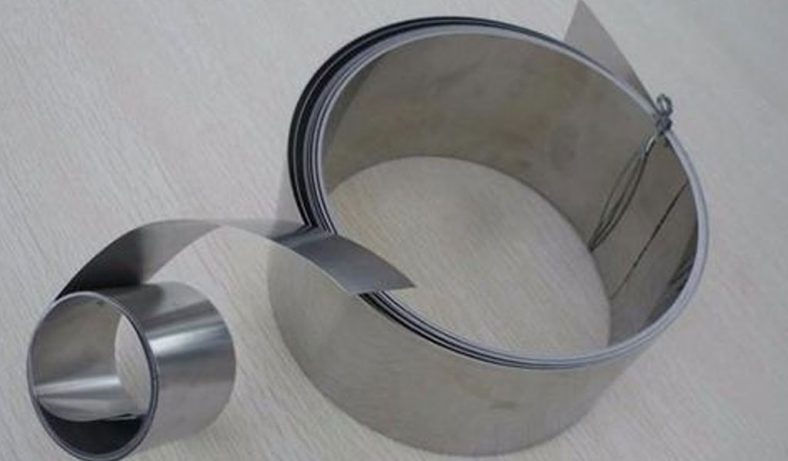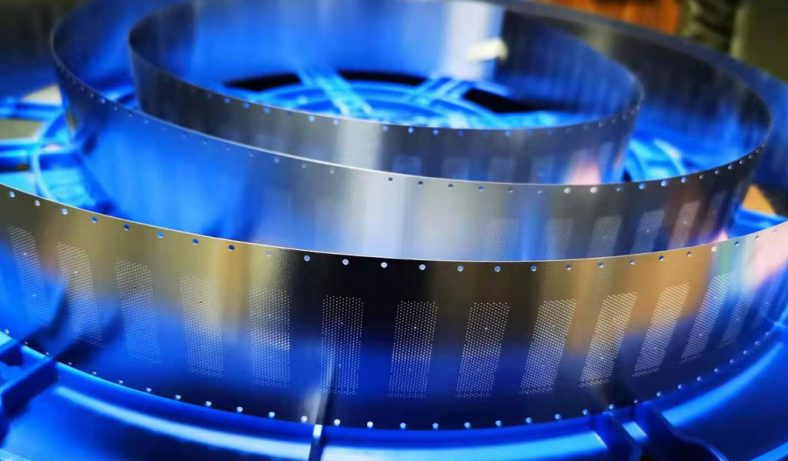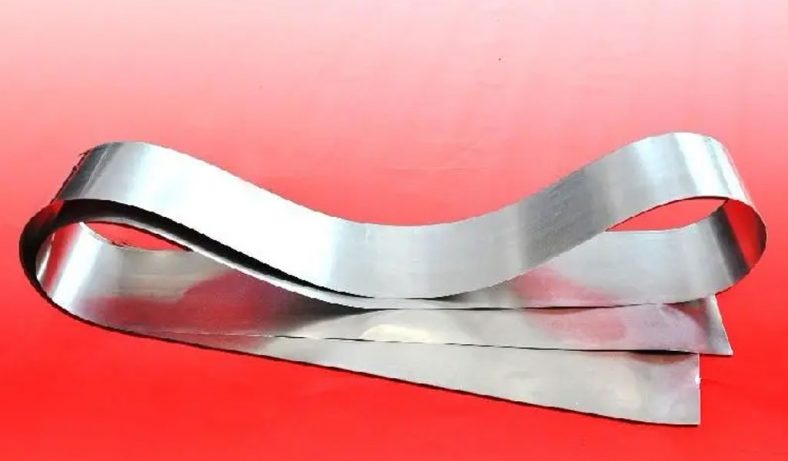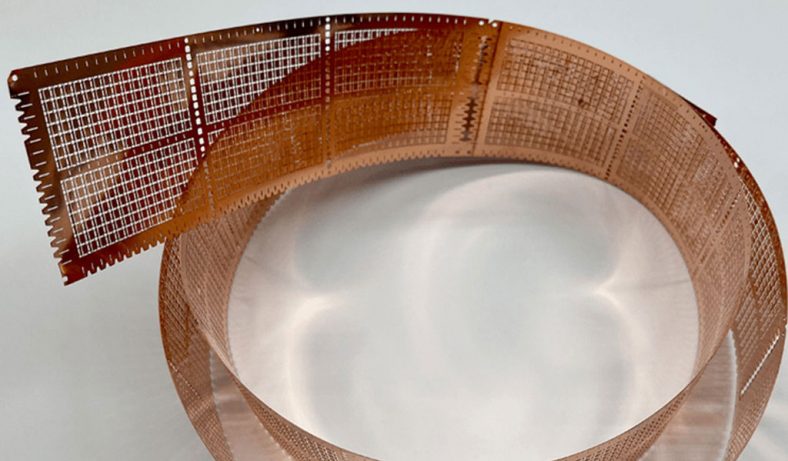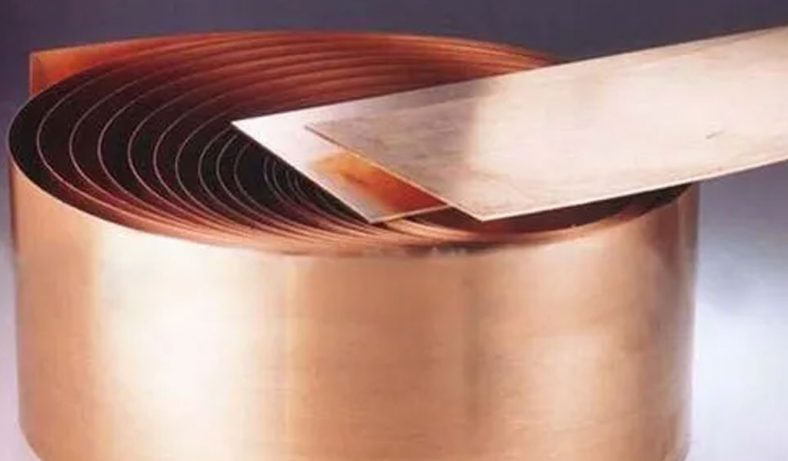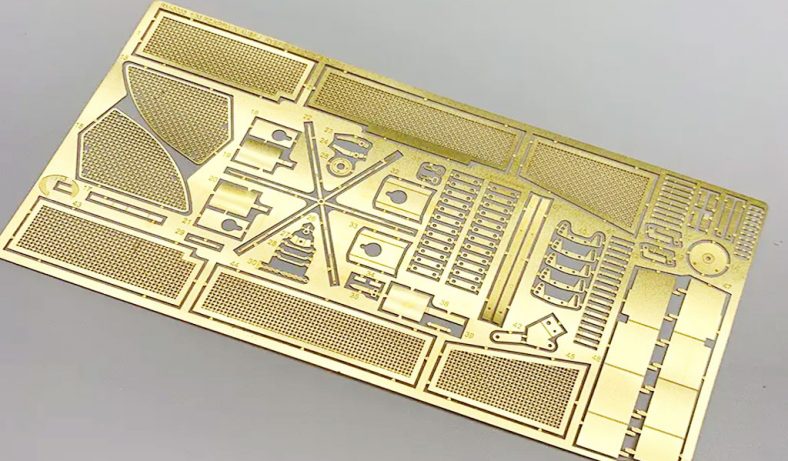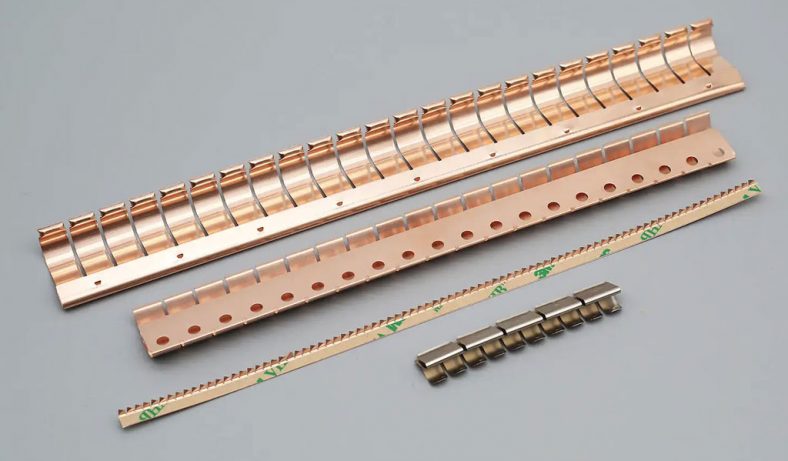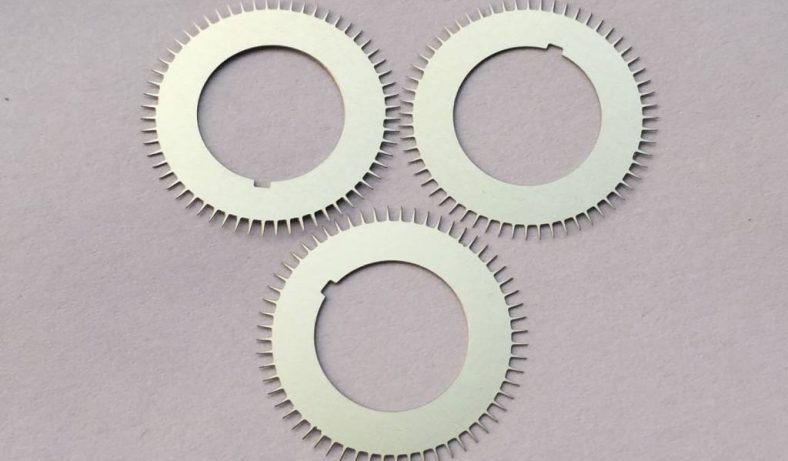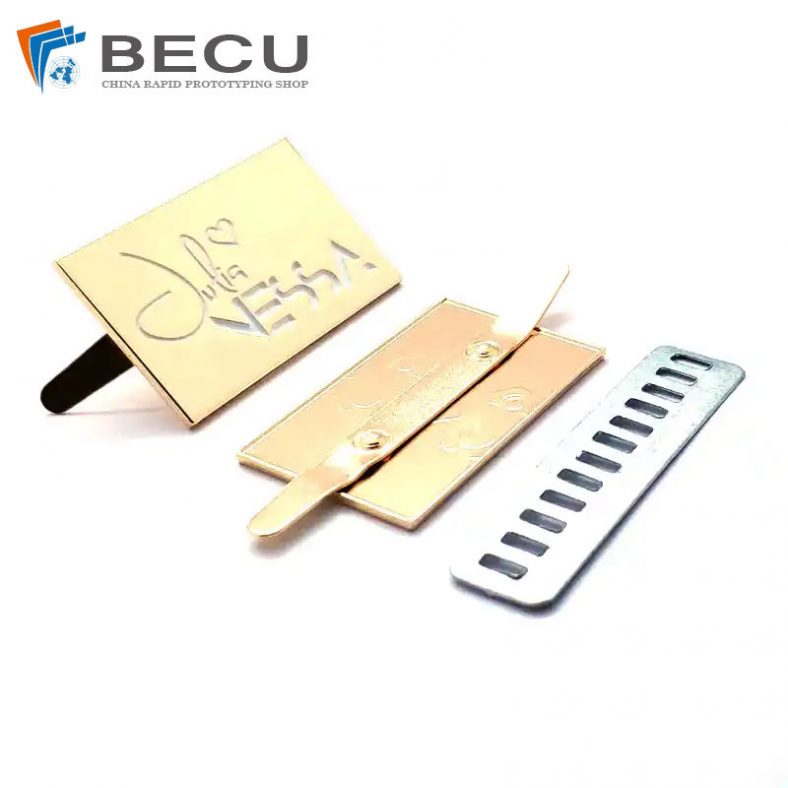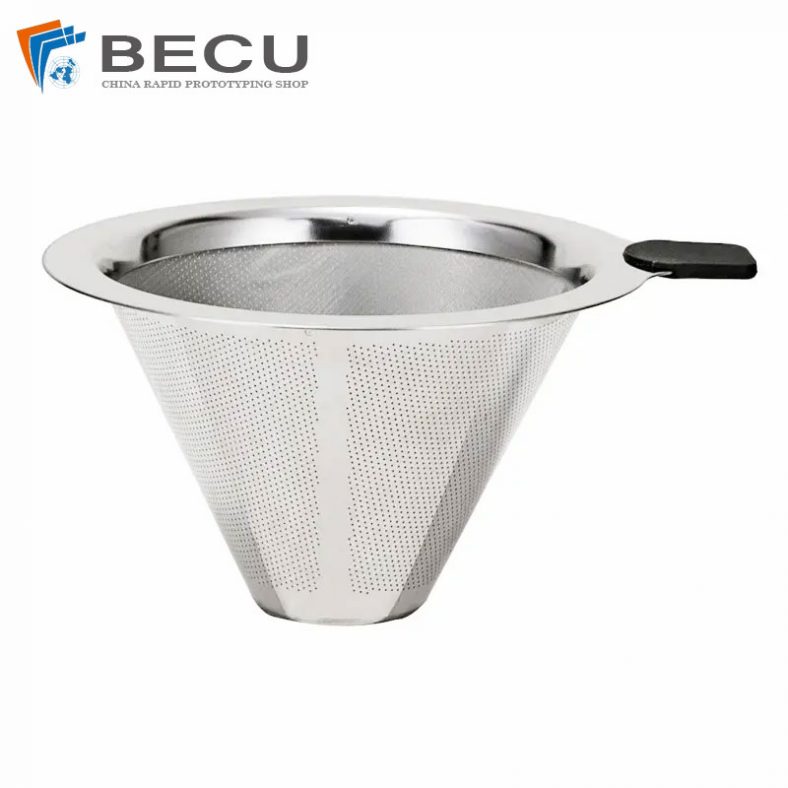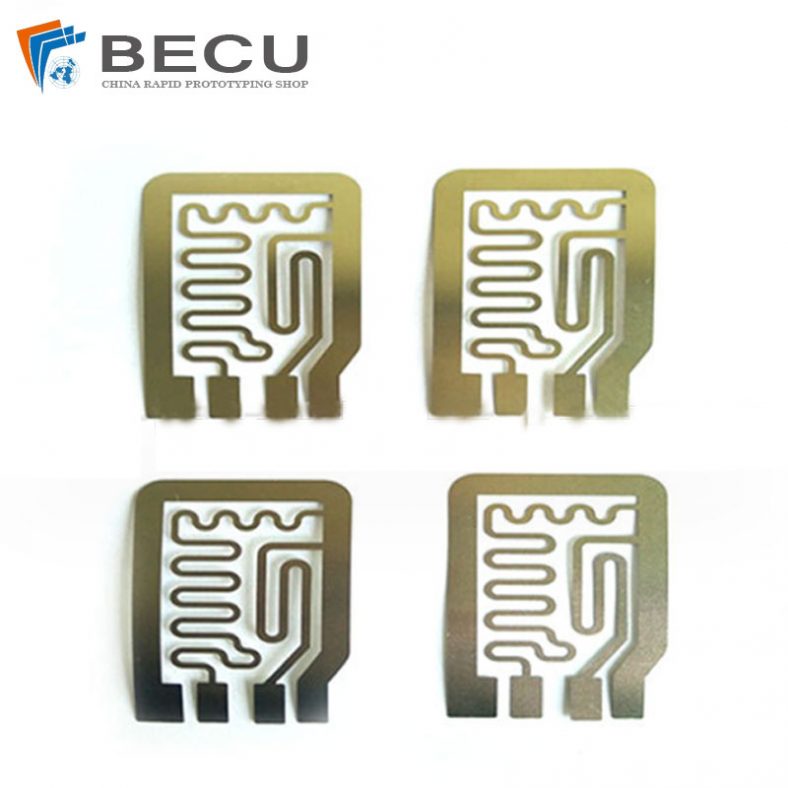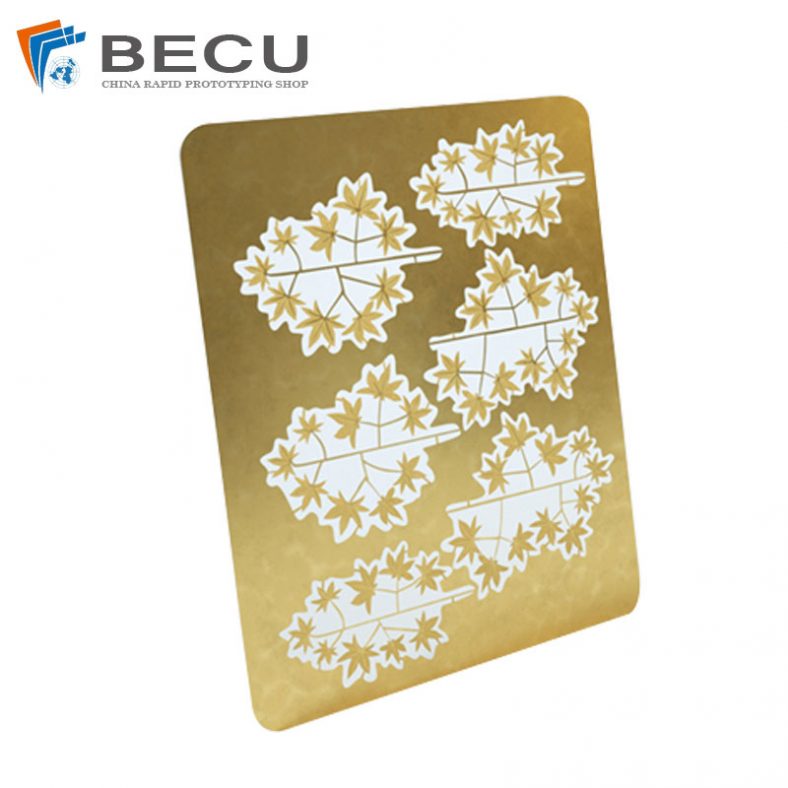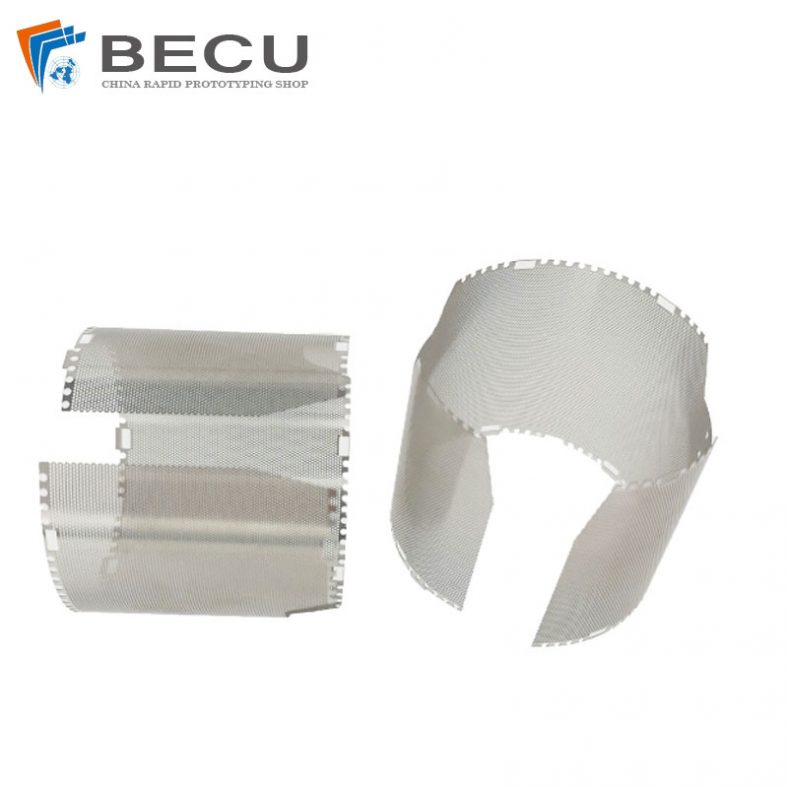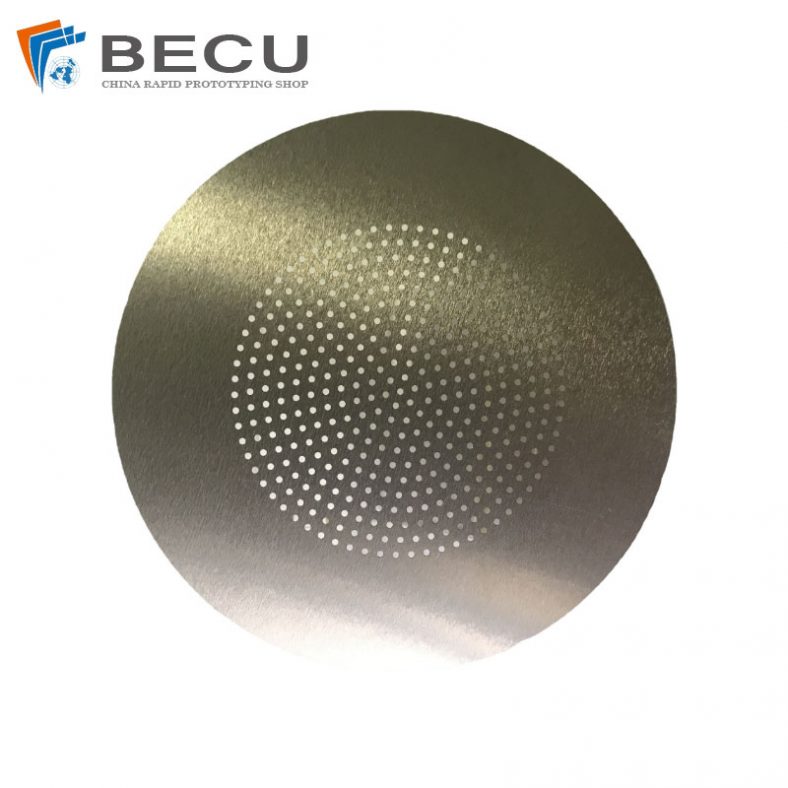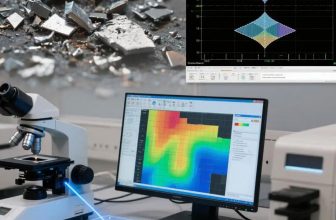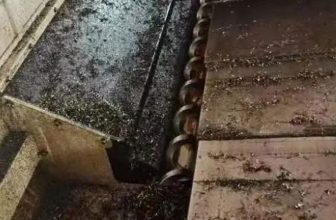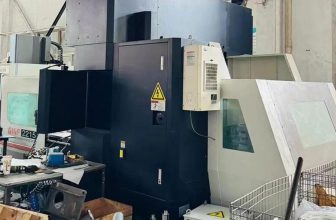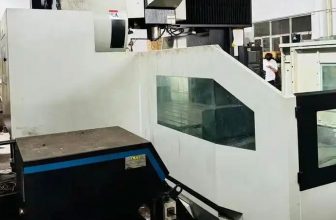Wet etching is a cornerstone technique in microfabrication, particularly for processing aluminum alloys in the production of micro-devices, such as microelectromechanical systems (MEMS), integrated circuits, and advanced sensors. Aluminum alloys, prized for their lightweight nature, corrosion resistance, and electrical conductivity, are extensively utilized in industries ranging from aerospace to electronics. However, the wet etching process, which involves the chemical removal of material using liquid etchants, introduces challenges related to defect formation. These defects, including surface roughness, undercutting, etch pits, and residual contaminants, can compromise the performance, reliability, and yield of micro-devices. Defect control in wet etching of aluminum alloys is thus a critical area of study, requiring a nuanced understanding of chemical interactions, process parameters, and material properties.
This article provides a comprehensive exploration of defect control strategies in wet etching of aluminum alloy micro-devices. It delves into the fundamental principles of wet etching, the types of defects encountered, and the methodologies employed to mitigate them. Detailed comparisons of etchants, process conditions, and defect characterization techniques are presented, supported by tables that synthesize data from scientific literature and industry practices. The discussion is grounded in a rigorous analysis of chemical, physical, and engineering factors, offering insights into optimizing wet etching for high-precision micro-device fabrication.
Fundamentals of Wet Etching in Aluminum Alloy Processing
Wet etching is a chemical process that removes material from a substrate through the application of liquid etchants. Unlike dry etching, which relies on plasma or gas-phase reactions, wet etching uses solutions that chemically react with the target material to dissolve it. In the context of aluminum alloys, wet etching is favored for its simplicity, cost-effectiveness, and ability to process large surface areas uniformly. Common etchants include acidic solutions (e.g., phosphoric acid, nitric acid, and hydrochloric acid) and alkaline solutions (e.g., potassium hydroxide and tetramethylammonium hydroxide). The choice of etchant depends on the alloy composition, desired etch rate, and selectivity with respect to other materials in the device structure.
The etching process typically involves immersing the substrate in an etchant bath or applying the etchant via spray or spin-coating systems. The chemical reaction between the etchant and the aluminum alloy results in material dissolution, often accompanied by the formation of byproducts such as oxides or insoluble residues. The isotropic nature of wet etching, where material is removed uniformly in all directions, contrasts with anisotropic dry etching, posing unique challenges for defect control, particularly in high-aspect-ratio structures.
Aluminum Alloys in Micro-Device Fabrication
Aluminum alloys, such as 6061, 7075, and Al-Cu alloys, are widely used in micro-device fabrication due to their favorable mechanical and electrical properties. For instance, 6061 aluminum is valued for its strength and corrosion resistance, while Al-Cu alloys are employed in interconnects for integrated circuits due to their low resistivity. The alloy composition, including elements like copper, magnesium, or silicon, influences the etching behavior, as these additives can alter the surface chemistry and reactivity with etchants.
In micro-device processing, aluminum alloys are often deposited as thin films via sputtering or evaporation techniques. These films serve as conductive layers, structural components, or sacrificial layers in MEMS. The etching process must achieve precise pattern transfer while minimizing defects that could degrade device performance, such as short circuits in interconnects or mechanical failures in MEMS components.
Chemical Mechanisms of Aluminum Etching
The wet etching of aluminum alloys involves redox reactions where the aluminum is oxidized and dissolved by the etchant. For example, in acidic etchants like phosphoric acid (H3PO4), the reaction can be represented as:
[ \text{Al} + 3\text{H}^+ \rightarrow \text{Al}^{3+} + \frac{3}{2}\text{H}_2 ]
In alkaline solutions like potassium hydroxide (KOH), the reaction forms soluble aluminate ions:
[ \text{Al} + 2\text{OH}^- + 2\text{H}_2\text{O} \rightarrow \text{Al(OH)}_4^- + \frac{3}{2}\text{H}_2 ]
These reactions are influenced by factors such as etchant concentration, temperature, and the presence of additives or impurities in the alloy. For instance, copper in Al-Cu alloys can form insoluble residues, complicating defect control. The formation of aluminum oxide (Al2O3) on the surface, a common occurrence in oxygen-containing environments, further affects etch rates and uniformity, as it is highly resistant to many etchants.
Types of Defects in Wet Etching of Aluminum Alloys
Surface Roughness
Surface roughness is a prevalent defect in wet etching, characterized by uneven material removal that results in a non-smooth surface. This defect can degrade the optical, electrical, and mechanical properties of micro-devices. For example, in MEMS resonators, surface roughness can alter resonance frequencies, while in interconnects, it can increase electrical resistance. Roughness is often quantified using parameters like root mean square (RMS) roughness, measured via atomic force microscopy (AFM) or profilometry.
The causes of surface roughness include non-uniform etchant distribution, variations in alloy composition, and the presence of grain boundaries. Anisotropic etching along grain boundaries, particularly in polycrystalline aluminum films, exacerbates roughness, as different crystal planes etch at varying rates. Studies have shown that etchants like ferric chloride (FeCl3) can produce smoother surfaces compared to alkaline solutions, due to their more uniform reaction kinetics.
Undercutting
Undercutting occurs when the etchant removes material beneath the mask, leading to wider etched features than intended. This isotropic etching behavior is a significant challenge in achieving high-resolution patterns, particularly in micro-devices with submicron features. Undercutting is quantified by the ratio of horizontal to vertical etch rates (RHV), which typically ranges from 3 to 5 in aluminum wet etching.
The degree of undercutting depends on etchant chemistry, mask adhesion, and etching time. For instance, a study by Lin et al. demonstrated that adding macromolecular additives, such as polyethylene-polypropylene glycol, to the etchant reduced the horizontal etch rate from 2.0 to 0.9 μm/min, improving the RHV from 3 to 1.3. This reduction was attributed to the inhibition of liquid transport in the horizontal direction by dispersed additive particles.
Etch Pits and Microcracks
Etch pits are localized depressions formed due to preferential etching at defect sites, such as dislocations or grain boundaries. In aluminum alloys, etch pits can compromise structural integrity and electrical performance, particularly in thin films used for interconnects. Microcracks, often resulting from residual stress during deposition or etching, further exacerbate defect-related issues, leading to potential device failure.
The morphology of etch pits depends on the etchant and alloy microstructure. For example, hydrochloric acid (HCl) produces boat-like etch pits in InP, a material with similar defect characteristics to aluminum alloys, suggesting potential parallels in defect formation mechanisms. Controlling etch pit formation requires careful selection of etchants and optimization of process conditions, such as temperature and agitation.
Residual Contaminants
Residual contaminants, such as polymeric residues or metal oxides, are common defects in wet etching. These residues can originate from incomplete removal of photoresist, etchant byproducts, or redeposition of dissolved material. For instance, post-etch residues in Al-Cu alloys often contain copper, which forms insoluble compounds that adhere to the surface. These residues can cause electrical shorts or poor adhesion in subsequent processing steps.
A study by Lee et al. identified post-metal etch residues caused by chlorine attack on aluminum sidewalls during reactive ion etching (RIE), a related process. In wet etching, similar residues can be mitigated using non-hydroxylamine-based strippers, which effectively remove polymeric residues without hardening the photoresist.
Strategies for Defect Control
Etchant Selection and Optimization
The choice of etchant is critical for defect control. Common etchants for aluminum alloys include:
- Phosphoric Acid (H3PO4): Widely used for its high etch rate and compatibility with silicon dioxide masks. However, it can cause surface roughness due to non-uniform dissolution.
- Ferric Chloride (FeCl3): Offers smoother surfaces and is environmentally friendly compared to alkaline etchants. It is effective for etching aluminum and its alloys, with minimal residue formation.
- Potassium Hydroxide (KOH): Suitable for anisotropic etching but prone to undercutting and etch pit formation due to its reactivity with grain boundaries.
- Tetramethylammonium Hydroxide (TMAH): Provides high selectivity over silicon and is less aggressive than KOH, reducing surface roughness.
Table 1 compares the properties of these etchants based on etch rate, selectivity, and defect characteristics.
| Etchant | Etch Rate (μm/min) | Selectivity (Al:SiO2) | Surface Roughness (RMS, nm) | Undercutting (RHV) | Common Defects |
|---|---|---|---|---|---|
| H3PO4 (85%, 50°C) | 1.5–2.0 | 50:1 | 5–10 | 3–4 | Surface roughness, etch pits |
| FeCl3 (40%, 50°C) | 0.8–1.2 | 30:1 | 2–5 | 2–3 | Minimal residues |
| KOH (30%, 70°C) | 2.0–3.0 | 20:1 | 10–15 | 4–5 | Undercutting, etch pits |
| TMAH (25%, 80°C) | 0.5–1.0 | 100:1 | 3–7 | 2–3 | Reduced roughness, some residues |
Note: Etch rates and selectivity depend on alloy composition and process conditions. Data sourced from literature reviews and experimental studies.
Process Parameter Optimization
Process parameters, such as temperature, etchant concentration, and agitation, significantly influence defect formation. For instance, a study by Chen et al. found that etching aluminum at 50°C in a controlled water bath reduced etch rate variance across different feature sizes, minimizing undercutting. Higher temperatures increase etch rates but can exacerbate roughness and residue formation, necessitating a balance between throughput and quality.
Agitation, achieved through stirring or ultrasonic methods, enhances etchant uniformity but can increase undercutting by promoting lateral liquid transport. The use of additives, such as surfactants or macromolecular compounds, can modulate etch rates and improve selectivity. For example, adding polyethylene-polypropylene glycol to an H3PO4-based etchant reduced the horizontal etch rate, as discussed earlier.
Masking and Surface Preparation
The quality of the mask and surface preparation directly affects defect control. Photoresists, such as positive or negative resists, are commonly used to define patterns. Poor adhesion of the photoresist to the aluminum surface can lead to undercutting and residue formation. Techniques like hexamethyldisilazane (HMDS) priming improve adhesion, reducing defects.
Surface cleaning prior to etching is critical to remove contaminants like oils, oxides, or organic residues. A typical cleaning sequence involves:
- Alkaline Cleaning: Immersion in a sodium hydroxide solution to remove organic contaminants.
- Deionized Water Rinse: Using water with a resistivity of at least 18 MΩ·cm to prevent ionic contamination.
- Acid Cleaning: Brief exposure to dilute HCl to remove native oxides.
- Drying: Hot air drying to ensure a clean, dry surface.
This sequence minimizes initial surface defects, ensuring uniform etching.
Advanced Techniques for Defect Mitigation
Additive-Assisted Etching
Additives can tailor the etching process to reduce defects. For instance, the addition of alcohols or acids to HF-based etchants improves selectivity and reduces roughness in silicon dioxide etching, which is often used in conjunction with aluminum etching. Similarly, macromolecular additives, as explored by Lin et al., inhibit horizontal etching, improving pattern fidelity.
Two-Step Etching Processes
A two-step etching process, combining wet and dry etching, can address specific defects. For example, a study on Al-Si thermomigration residues used BCl3 plasma to remove aluminum oxide, followed by a wet etch to eliminate remaining Al-containing residues. This approach minimizes damage to underlying silicon and silicon dioxide layers while achieving complete residue removal.
Surface Modification
Post-etch surface modification, such as silane coating or lauric acid treatment, can enhance surface properties like hydrophobicity, reducing adhesion of residues and improving device performance. For instance, silane-coated anodized aluminum oxide (AAO) surfaces achieved a water contact angle of ~146°, indicating near-superhydrophobicity, which can prevent residue accumulation.
Defect Characterization Techniques
Optical Microscopy
Optical microscopy is a widely used technique for initial defect inspection due to its ease of use and accessibility. It can identify surface roughness, undercutting, and large etch pits. However, its resolution is limited, making it less effective for nanoscale defects.
Scanning Electron Microscopy (SEM)
SEM provides high-resolution imaging of surface morphology, enabling detailed analysis of etch pits, microcracks, and residues. For example, SEM studies of AlN etching revealed hexagonal etch pits correlated with dislocations, offering insights into defect origins.
Atomic Force Microscopy (AFM)
AFM quantifies surface roughness and topography at the nanoscale. It is particularly useful for measuring RMS roughness and identifying subtle defects like shallow grooves or nanoscale etch pits. A study on InP fin structures used AFM to detect 1-nm-deep grooves associated with planar defects.
Surface Profilometry
Surface profilometry, using contact or non-contact methods, measures surface roughness and feature dimensions. For instance, a 3D surface profiler (Alicona InfiniteFocusSL) was used to analyze Al 7075 machined surfaces, revealing adhesion defects with heights of 10–15 μm.
Table 2 summarizes the capabilities of these characterization techniques.
| Technique | Resolution (nm) | Defect Types Detected | Advantages | Limitations |
|---|---|---|---|---|
| Optical Microscopy | 200–1000 | Roughness, undercutting, large pits | Easy to use, fast | Limited resolution |
| SEM | 1–10 | Etch pits, microcracks, residues | High resolution, detailed imaging | Requires vacuum, sample preparation |
| AFM | 0.1–1 | Roughness, nanoscale pits, grooves | Nanoscale precision | Slow, small scan area |
| Surface Profilometry | 10–100 | Roughness, adhesion, feature size | 3D topography, large area | Less sensitive to nanoscale defects |
Case Studies in Defect Control
Aluminum Interconnect Etching
In semiconductor manufacturing, aluminum interconnects require precise etching to form conductive lines. A study by Lee et al. addressed defects in oxide-masked Al etching, identifying post-hard-mask etch residues and blocked etch metal islands. By implementing in-situ O2-based plasma ashing followed by non-hydroxylamine-based wet stripping, they eliminated polymeric residues, achieving defect-free via holes.
MEMS Fabrication
In MEMS fabrication, wet etching is used to release sacrificial aluminum layers. A study on AlN etching demonstrated that a 48% HF solution combined with 20% oleum achieved a high SiO2 etch rate (1 μm/min) with minimal attack on the aluminum layer, increasing sheet resistance by only 7.6% after 9 minutes of etching. This approach minimized undercutting and residue formation, critical for MEMS device reliability.
Anti-Icing Aluminum Surfaces
In aerospace applications, wet etching combined with laser machining has been used to create superhydrophobic aluminum surfaces for anti-icing. A study on 2524 aluminum alloy showed that hierarchical micro/nanostructures, achieved through laser processing followed by wet etching, delayed droplet freezing by 10 times compared to smooth surfaces. This highlights the role of controlled etching in achieving functional surfaces with minimal defects.
Environmental and Safety Considerations
Wet etching involves hazardous chemicals, necessitating careful handling and disposal. For instance, HF-based etchants pose significant risks due to their toxicity and corrosiveness. Using FeCl3, an environmentally friendlier alternative, reduces ecological impact while maintaining effective etching. Recycling systems, as implemented in ACM’s wet etching systems, minimize chemical waste by reusing etchants, aligning with sustainable manufacturing practices.
Safety measures include using secure seals to prevent chemical evaporation, precise temperature control to avoid runaway reactions, and proper ventilation systems. These practices ensure operator safety and compliance with environmental regulations.
Future Directions in Defect Control
Advanced Etchant Formulations
Research into novel etchant formulations, such as hybrid acid-alkaline mixtures or bio-inspired etchants, could further reduce defects. For example, citric acid-based etchants, historically used in ancient Egypt, may offer environmentally friendly alternatives for modern microfabrication.
Integration with Dry Etching
Combining wet and dry etching in hybrid processes can leverage the strengths of both techniques. Dry etching’s anisotropy can minimize undercutting, while wet etching’s uniformity can reduce roughness. Developing integrated process flows will require advancements in equipment design and process control.
Machine Learning for Process Optimization
Machine learning algorithms can optimize etching parameters by predicting defect formation based on historical data. For instance, regression models, as used in aluminum oxide etching studies, can guide real-time adjustments to temperature, concentration, and agitation, improving yield and quality.
Nanoscale Defect Detection
As micro-devices shrink to nanoscale dimensions, defect detection techniques must evolve. Emerging methods like transmission electron microscopy (TEM) and X-ray photoelectron spectroscopy (XPS) offer high sensitivity for characterizing nanoscale defects, enabling precise defect control in advanced devices.
Conclusion
Defect control in wet etching of aluminum alloy micro-devices is a multifaceted challenge that requires a deep understanding of chemical, material, and process interactions. By carefully selecting etchants, optimizing process parameters, and employing advanced characterization techniques, manufacturers can mitigate defects like surface roughness, undercutting, etch pits, and residues. The integration of additives, hybrid etching processes, and surface modification techniques further enhances defect control, enabling high-performance micro-devices for applications in electronics, MEMS, and aerospace. As the field evolves, innovations in etchant formulations, process integration, and defect detection will drive the next generation of microfabrication, ensuring reliability and scalability in aluminum alloy processing.

